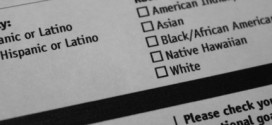By Derek Mong
On June 24 of this year, the Supreme Court was faced with a case that dealt with the age old debate of affirmative action and race-conscious admissions. Fisher v. University of Texas had the potential to reverse the constitutionality of race-conscious affirmative action policies that were established through legal precedent in rulings before.
Over the years, the Court has slowly established a policy that race-conscious affirmative action policies were permissible as long as the end goal was to promote diversity and enhance the college experience for all the students at the institution. In 1978, the Court ruled in Regents of the University of California v. Bakke that the racial quotas for ethnic minorities at the University of California at Davis’ medical school were unconstitutional but agreed that race could be used among a number of other factors to achieve diversity as part of a holistic admissions approach.
In 2003, Grutter v. Bollinger upheld the University of Michigan Law School’s use of narrowly tailored racial preferences as a means to achieve diversity, arguing that favoring “underrepresented minority groups” was acceptable as long as there was a “compelling interest in promoting class diversity.” In that same year, Gratz v. Bollinger, which evaluated the constitutionality of the University of Michigan’s undergraduate admissions program, declared that a strict point system that included race as a factor in admissions was unconstitutional. The Supreme Court argued that such a point-based system “ensures that the diversity contributions of applicants cannot be individually assessed.”
Based on all these prior cases, the use of race-conscious affirmative action admissions practices is constitutional, as long as neither a strict race-based point system nor a racial quota system is employed.
In the case brought before the Supreme Court this year, Fisher v. University of Texas plaintiff Abigail Fisher, a white woman, argued that her equal protection rights had been violated when she was denied admission to the University, arguing that the institution had discriminated against her as a result of its race-conscious admissions policies. In the Supreme Court ruling, the Court sent the case back to a lower court, arguing that the lower court failed to apply the standard of strict scrutiny as is required to uphold a race-conscious affirmative action policy. Essentially, the lower court was tasked with evaluating whether the University “offered sufficient evidence to prove that its admissions program is narrowly tailored to obtain the educational benefits of diversity.” Race-conscious affirmative action policies were, thus, upheld.
As a matriculating minority student at Duke University in 2009—an elite university in the South that is rife with a not-too-distant history of racial inequities—I had come to believe that race was a nonissue in the post-Obama era, especially when it came to my choice of university. By almost every measure and metric of diversity available, Duke is at the forefront of inclusivity with a slim majority (51.4%) of my incoming freshmen class self-identifying as Caucasian—the rest self-identifying as a racial minority or an international student. We had a Center for Multicultural Affairs, a Center for Black Culture, a Center for Jewish Life, a Center for Muslim Life, and a prolific assortment of various cultural groups reflecting the diversity of the University’s constituent population. We even had a hefty university cultural fund dedicated to supporting cultural activities on campus, an annual “Unity through Diversity” forum that highlighted common civil rights issues that affect racial minorities, and cultural living groups that allow for an immersive multicultural living experience.
 If you had asked me back in 2009 my stance on affirmative action, I would have told you that I was vehemently opposed to it. I would have naively told you that educational opportunities for racial minorities were now abundant (how could it not be if my incoming class was approaching majority-minority?) and that admissions should be based on the conventional notion of meritocracy (after all, isn’t that why I had worked so hard to score my 99th percentile SAT score and achieve my 3.97 GPA?) Perhaps a bit more perniciously, I also knew that my odds of gaining admission to a top tier university suffered when universities needed to counterbalance my credentials—which were impressive, but not necessarily unique—against those of the thousands of eager high school graduates just like me, especially those who had a similar demographic and academic profile.
If you had asked me back in 2009 my stance on affirmative action, I would have told you that I was vehemently opposed to it. I would have naively told you that educational opportunities for racial minorities were now abundant (how could it not be if my incoming class was approaching majority-minority?) and that admissions should be based on the conventional notion of meritocracy (after all, isn’t that why I had worked so hard to score my 99th percentile SAT score and achieve my 3.97 GPA?) Perhaps a bit more perniciously, I also knew that my odds of gaining admission to a top tier university suffered when universities needed to counterbalance my credentials—which were impressive, but not necessarily unique—against those of the thousands of eager high school graduates just like me, especially those who had a similar demographic and academic profile.
Yet, over the course of my college years, the campus that I shaped and shaped me forced me to reconsider my stance on affirmative action and on diversity politics at-large. I cannot recall one particular incident that changed my opinion about affirmative action but there was a realization, over many years, that the most fruitful relationships—and much of my own personal growth in retrospect—came from instances in which my worldviews and ideologies were undermined by those individuals who had a enormously different background than my own, with a plethora of life experiences to which I was never exposed.
I remember arguing with a close friend about the sins of abortion during the first semester of my first year in a “History of Medicine” seminar, not realizing that she had had an abortion the summer before coming to Duke. I remember feeling a sense of camaraderie with my peers who, no matter where in the country they called home or what color their skin happened to be, experienced similar forms of discrimination as I did. I recall the friends who were not able to return home for Thanksgiving Break because they could not afford the trip. I remember the fraternity party invitation asking partygoers to dress up as Mexicans in mockery of their customs and culture. I remember going to our Center for Muslim Life to learn more about often-misunderstood tenets of Muslim culture, even if only for a brief meal. I remember the homophobic slurs that were graffitied on our freshmen campus benches. As a student staff member at the International House, I recall students at the end of international student orientation telling me how they were amazed by how our campus—my beloved alma mater—had a community that was so different, yet, at once, was so united as a community in the common pursuit of knowledge.
And so, if you ask me today for my stance on affirmative action, I would tell you that I not only support it, but also think that it does not go far enough. Although we cannot pinpoint who was admitted to my university based on the race-conscious affirmative action policy, what is clear to me is my experience at Duke would not have been as rich if it were simply monochromatic.
We must reject the temptation of racial colorblindness. After all, although Duke celebrated the 50th anniversary of Black students being admitted to and attending the University in July of this year, African American students are still underrepresented at Duke, and racial cleavages still exist between the University and the encompassing town of Durham, North Carolina—which was once a segregated tobacco plantation.
Moreover, we must reject the notion of meritocracy and recognize that meritocracy is itself a delusion. Merit can be defined on a number of different spectra (i.e. academic achievement, athletic or artistic ability, hours of extracurricular service, etc.), and any single index of merit is necessarily a value judgment: in other words, by defining merit, we are also defining what we deem to be important and not-as-important. Merit is thus a poor objective measure of excellence, and meritocracy a thinly veiled proxy for other preferences. In the instance of GPA’s or SAT scores, the notion of merit is complicated by the fact that academic achievement is confounded by factors including socioeconomic class and, by consequence, race. Numerous studies show that black kindergarteners enter school already one year behind their white counterparts; by high school graduation, black teenagers are four years behind white teenagers. Any single measure of merit—say, a standardized test score—only captures one particular metric at one particular moment in time, and is, thus, single-dimensional and reductionist by its very nature.
The fundamental question for me in evaluating the adequacy of race-consciousness in affirmative action is perhaps best summed up by a question posed by Justice Scalia: is there “compelling evidence in the educational benefits of diversity to justify racial preferences in university admissions?”
I have no doubt that it does.
My college experience would not have been the same if Duke had simply selected students in the top SAT or GPA percentiles. I learned more from my peers who dropped out of Duke to start a band, or launch their own companies, or participate in the Olympics than I did from those who played by the books and graduated summa cum laude.
Affirmative action might help to correct years of historical disadvantage for minority groups (or at least it purports to), but, even more fundamentally than that, the racial diversity of my university textured and added richness to my college experience. Perhaps this is a selfish reason to support affirmative action, but the validity of it as a policy needs to be evaluated in terms of the benefits it can afford to all students—not just those who are direct beneficiaries in the conventional sense.
In the case of Fisher v. University of Texas, I am proud to know that my alma mater—along with many Ivy League schools and Stanford University—filed a joint legal statement in support of race-conscious affirmative action. The brief urges the Court “to continue to allow educational institutions to structure admissions programs that take account of race and ethnicity as single factors within a highly individualized, holistic review process.” These policies are necessary not only to reconcile past injustices, but also so that our future CEO’s, teachers, lawyers, doctors, and entrepreneurs receive an education that not only arms them with knowledge, but also the humility and understanding that their experience is only one of a diverse set of life experiences.
Chief Justice John Roberts wrote in the majority opinion of Parents Involved in Community Schools v. Seattle School District No. 1 that “the way to stop discrimination on the basis of race is to stop discriminating on the basis of race.” I beg to differ: the way to stop discrimination on the basis of race is to embrace the intersectionality of identities and fluidity of race as a social construction. Race is a product of social invention and the human imagination—a fluid construction that changes across time and across spaces. Although socially invented, race manifests in concrete differences in political and economic mobility across different demographics. Reinterpreting race as a consequential phenomenon in these politico-economic terms—rather than in identity-based or loose constructivist terms—sheds light on how racial differences, though socially constructed, has shaped and is shaped by society. Racism and classism are, thus, necessarily disentangled phenomenon, and one cannot adequately address the diversity of our universities without similarly tackling the spectrum of other cleavages that complicates our conception of diversity.
Derek Mong (@derekmong) is a social justice activist and has worked for non-profit organizations, political campaigns, the federal government, and national civil rights organizations to address issues of social justice, economic disparity, and civic engagement. Derek currently works in Washington, D.C. as a manager for a federal government management/IT consulting firm. During his undergraduate years at Duke University, Derek served as president of the Asian Students Association and co-founder of the Asian American Alliance. Derek also served as the National Chair of the East Coast Asian American Student Union (ECAASU), directed the 2012 ECAASU conference at Duke University, and served on the Youth Advisory Council for the Asian American Justice Center (AAJC). As a political science major, Derek has worked for Asian Pacific Islander American Vote (APIAVote), the U.S. House of Representatives, the Maryland State Senate, and the Obama campaign.
Have an opinion about affirmative action or any other issue? Let us know at editor@asianfortunenews.com or send us a message on Facebook – fb.com/asianfortune or Twitter – @asianfortune_dc
 Asian Fortune Your source for all things Asian American
Asian Fortune Your source for all things Asian American



